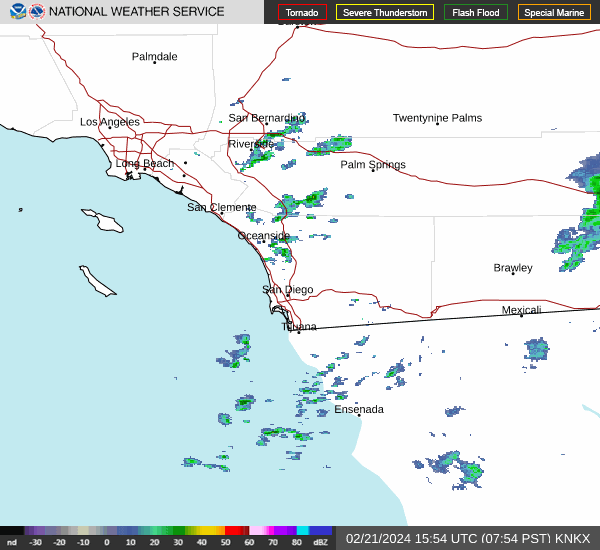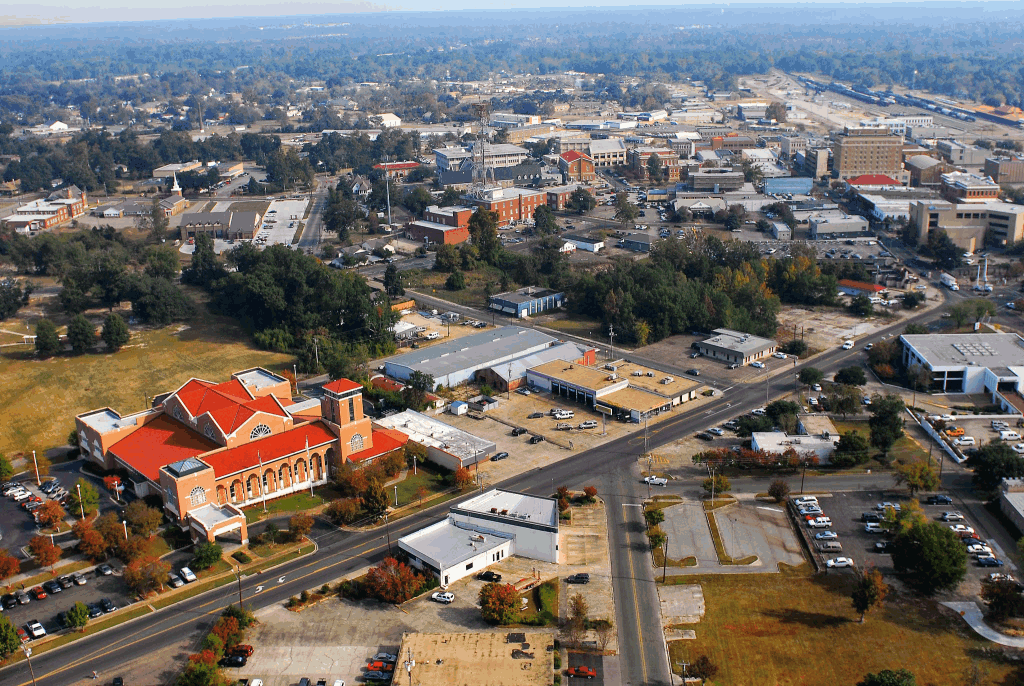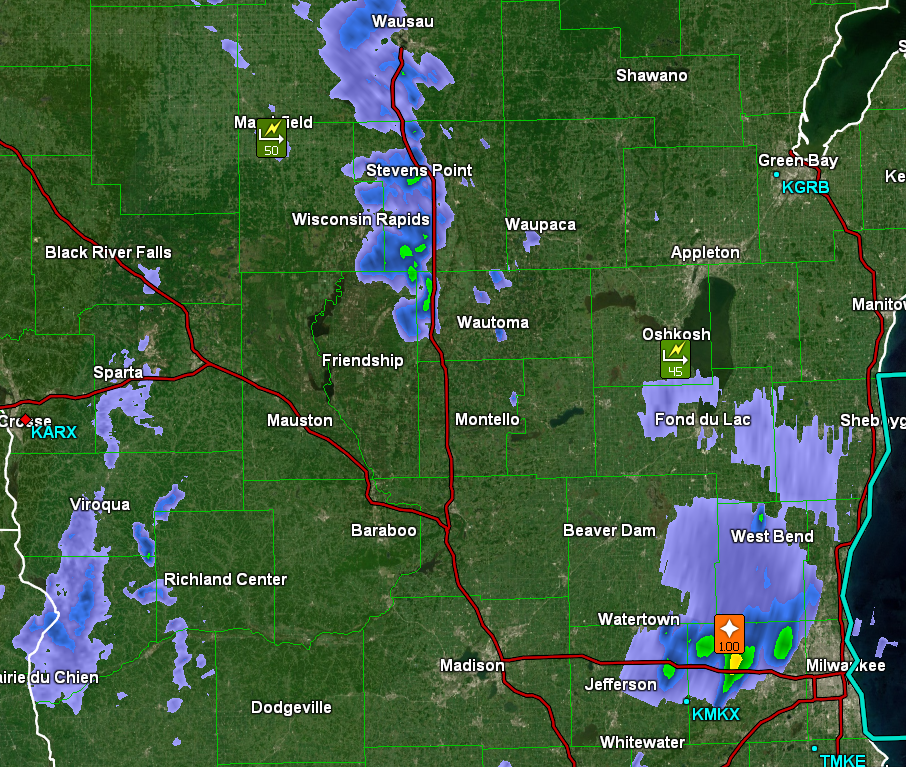We’re forecasting in southern California today. It’s been a rainy start to the week, which has become a regular trend this month.
At 751AM, ET, San Diego was reporting a temperature of 51 degrees with overcast skies. The most recent band of rain showers was still leading to reports of light rain in Oceanside, but was starting to peel away from the coastal areas, and becoming an issue primarily for the Inland Empire and Mohave Desert. In the wake of another rain event, there are flood watches throughout the San Diego area.
A smattering of light showers will continue throughout the day, particularly in the higher terrain of southern California, with an end coming before nightfall. Robust onshore flow at the upper levels will likely lead to some cloudy conditions even after the rain ends. A large area of low pressure off the coast of northern California is expected to linger, sending moisture rich ocean air at the low levels as well, which may mean morning fog the next couple of days in San Diego, but there will be a break from the rain until at least next week.
Tomorrow – Mostly cloudy, High 61, Low 52
Friday – Morning haze and fog, then clearing, High 70, Low 51
TWC: Tomorrow – Partly cloudy. High 64, low 51
Friday – Cloudy skies early, then partly cloudy in the afternoon. High 70, Low 50
AW: Tomorrow – Areas of fog in the morning; otherwise, clouds giving way to some sun; a welcome break from recent heavy rain High 64, Low 49
Friday – Patchy fog in the morning; otherwise, clouds giving way to some sun High 70, Low 49
NWS: Tomorrow – Mostly cloudy, then gradually becoming sunny High 64, Low 49
Friday – Sunny, High 70, Low 50
WB: Tomorrow – Partly cloudy, High 62, Low 50
Friday – Partly cloudy in the morning, becoming mostly sunny, High 68, Low 48
WN: tomorrow – Partly cloudy, High 64, low 51
Friday – Mostly sunny, High 68, Low 51
CLI: Tomorrow – Partly cloudy, High 64, Low 48
Friday – Sunny, High 70, Low 45
What a relief for San Diego to start coming out of this soggy week. It might even warm up a bit over the coming days and help San Diego feel more like San Diego again. Not much left on radar, fortunately.






